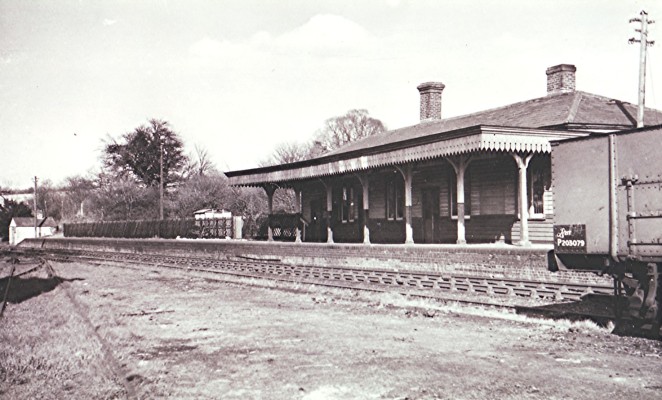The Railway (The Nickey Line)
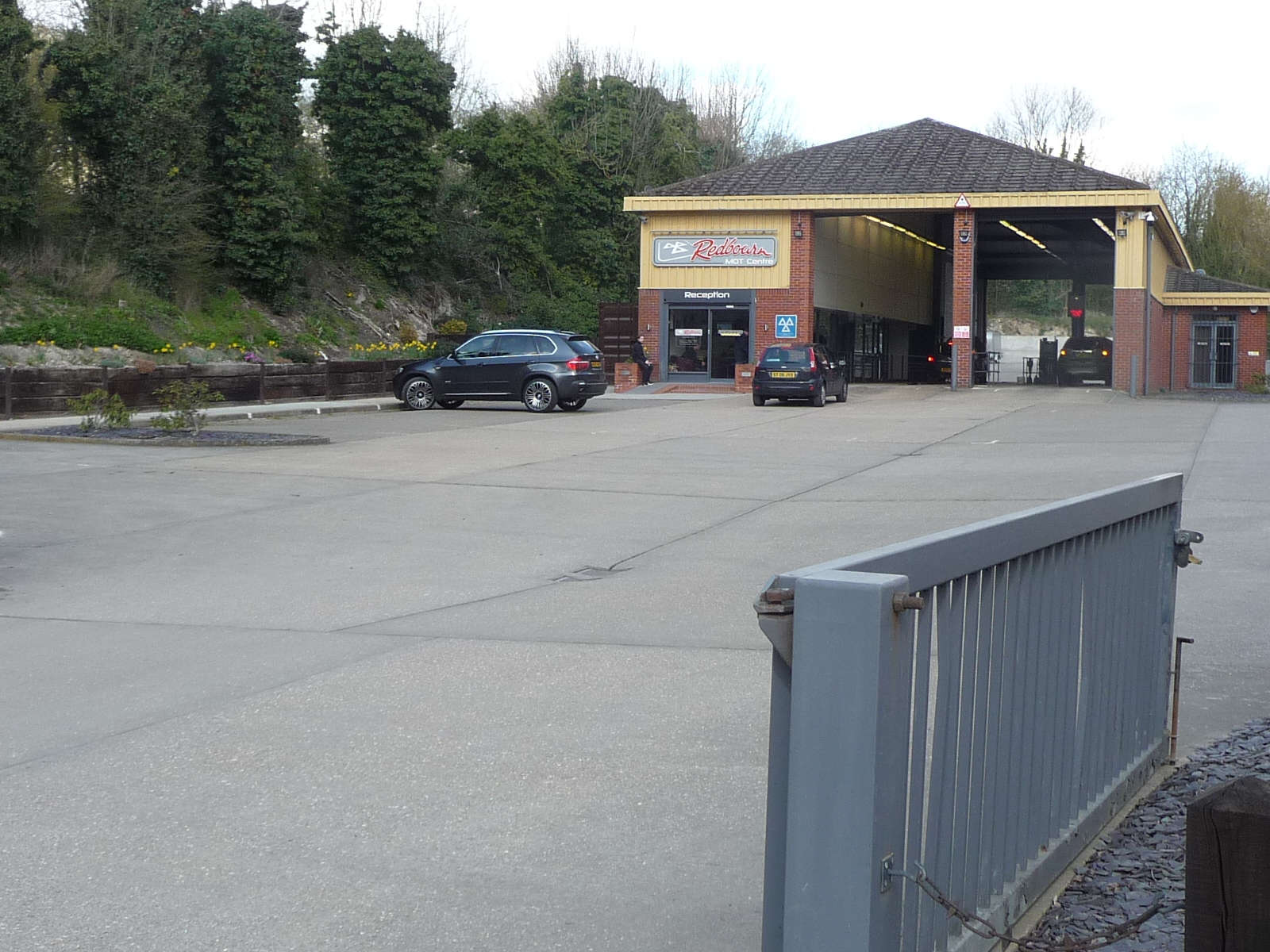
The Redbourn MOT Centre occupies the site of the approach road to Redbourn Station.
This space next to the railway has been used as a coal yard, a truck and lorry and car coffee stop which was very popular with local young people.
Any more information and photos please?
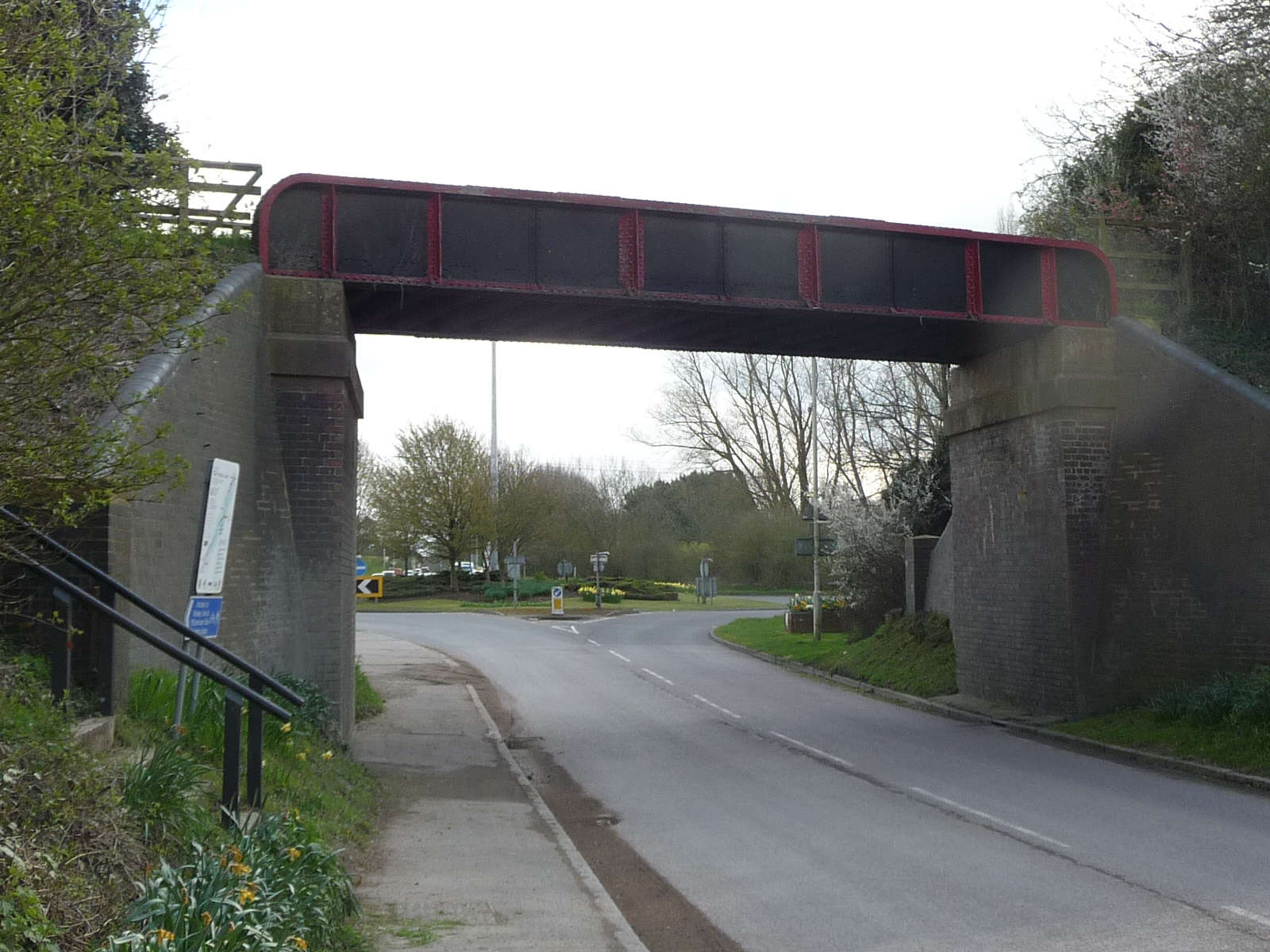
The bridge is the only structure of the railway remaining
The first proposal for a rail link for the townspeople of Hemel Hempstead was presented in 1862 by John Grover. His proposal was for a short spur from the main line at Boxmoor, following the route of the River Gade to the lower end of the (old) town at Bury Mill End. At the same meeting, another proposal was put forward by a Mr. Stocken and a Mr. Stallon, extending the line to Redbourn to link to the Great Northern Railway at Harpenden
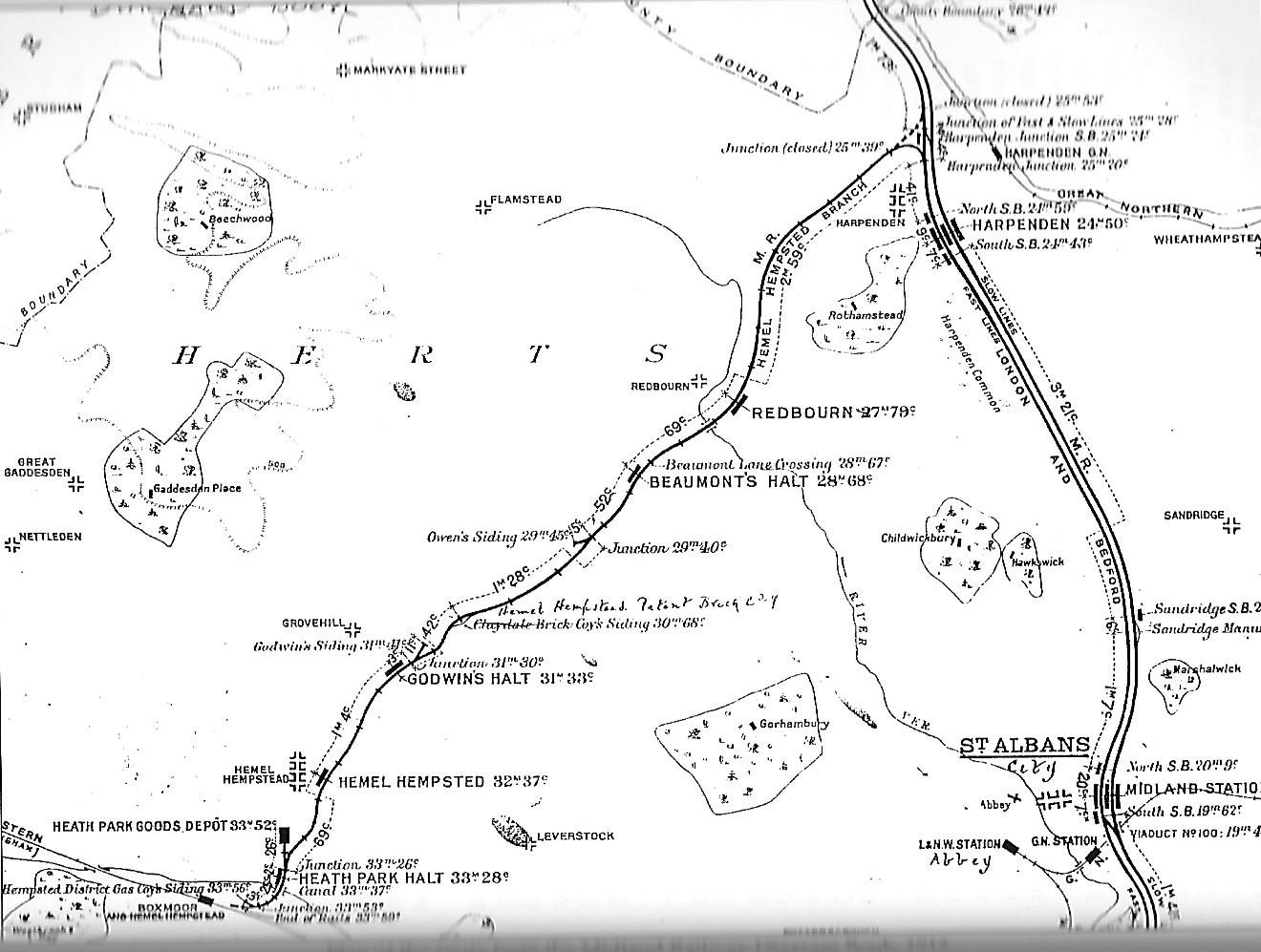
These plans were revised and resubmitted for Parliamentary approval, obtained in 1866. The railway company had meanwhile already commenced construction work in anticipation of approval. The new line was to follow the route authorized in 1863 through Hemel Hempstead and Redbourn, before curving north around Harpenden, crossing the turnpike road (A1081) and passing under the Midland line to connect with the GNR at Harpenden East, with provision for a spur to connect to the Midland Railway line north of Harpenden Central.
Construction proceeded extremely slowly, the lower spur from Boxmoor to Hemel Hempstead only being completed by 1871. Eventually, the rail company ran into financial difficulties and it was the Midland Railway company who financed the completion of the line and agreed to operate it once it was built. At this time the transporting of goods and coal was the most important factor in the development of railways rather than commuter rail. The thriving hat making industry in Luton created demand for a transport link with the straw plait trade that existed in Hemel and, as a result, the initial connection with the Midland Railway at Harpenden headed north towards Luton rather than south towards London.
The line was finally opened on 16 July 1877 to great fanfare with celebrations led by a band. A special train was laid on from Hemel to Luton and champagne receptions were held in Luton and Hemel town halls. Church bells were rung and a banner hung across Alexandra Road in Hemel proclaimed "Success to the Hemel Hempstead and Midland Railway Company".
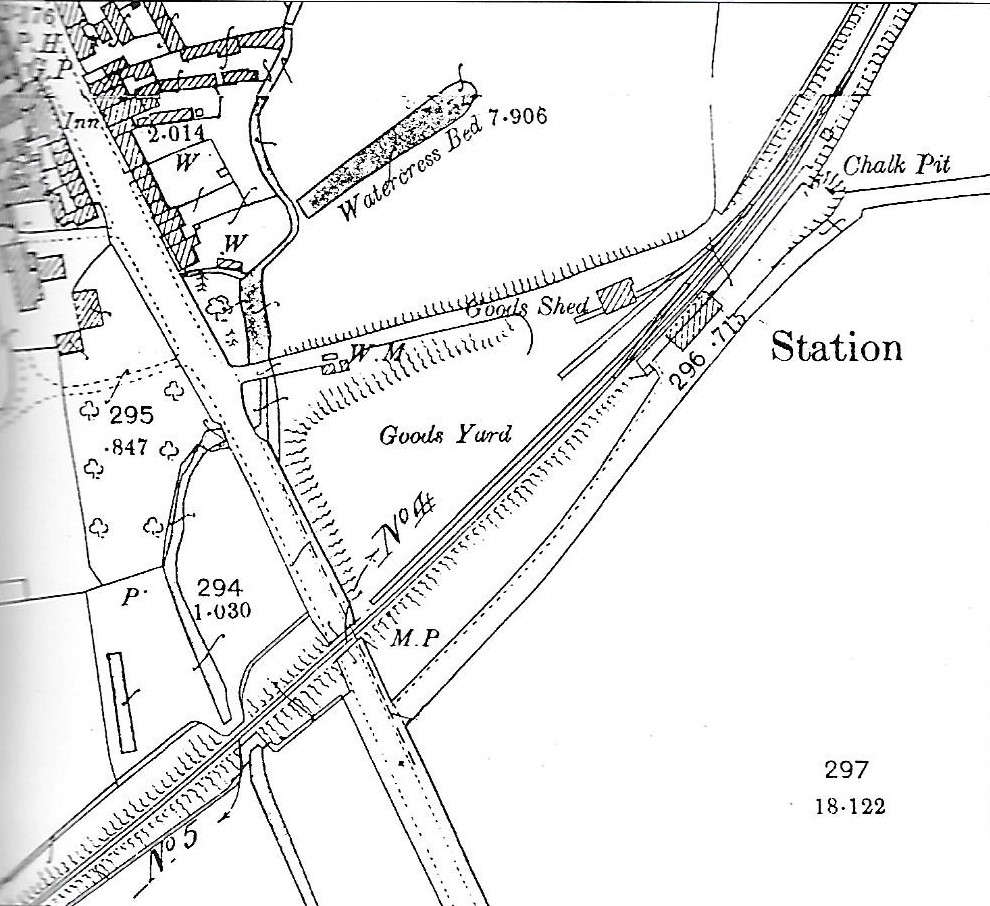
Eventually the straw plait trade declined and passenger demand increased ; local businessmen wanted a fast route into London without having to go via Luton, and in order to help the line pay its way the junction at Harpenden was realigned in 1888 so that it headed south instead of north, and passengers now changed trains at Harpenden Junction.
After the First World War, Britain's railway companies were making losses, and in 1923 the railways were merged into the "Big Four". Former competitors Midland and LNWR were absorbed into the London, Midland and Scottish Railway (LMS); A new railway station was opened at Roundwood Halt in 1927.
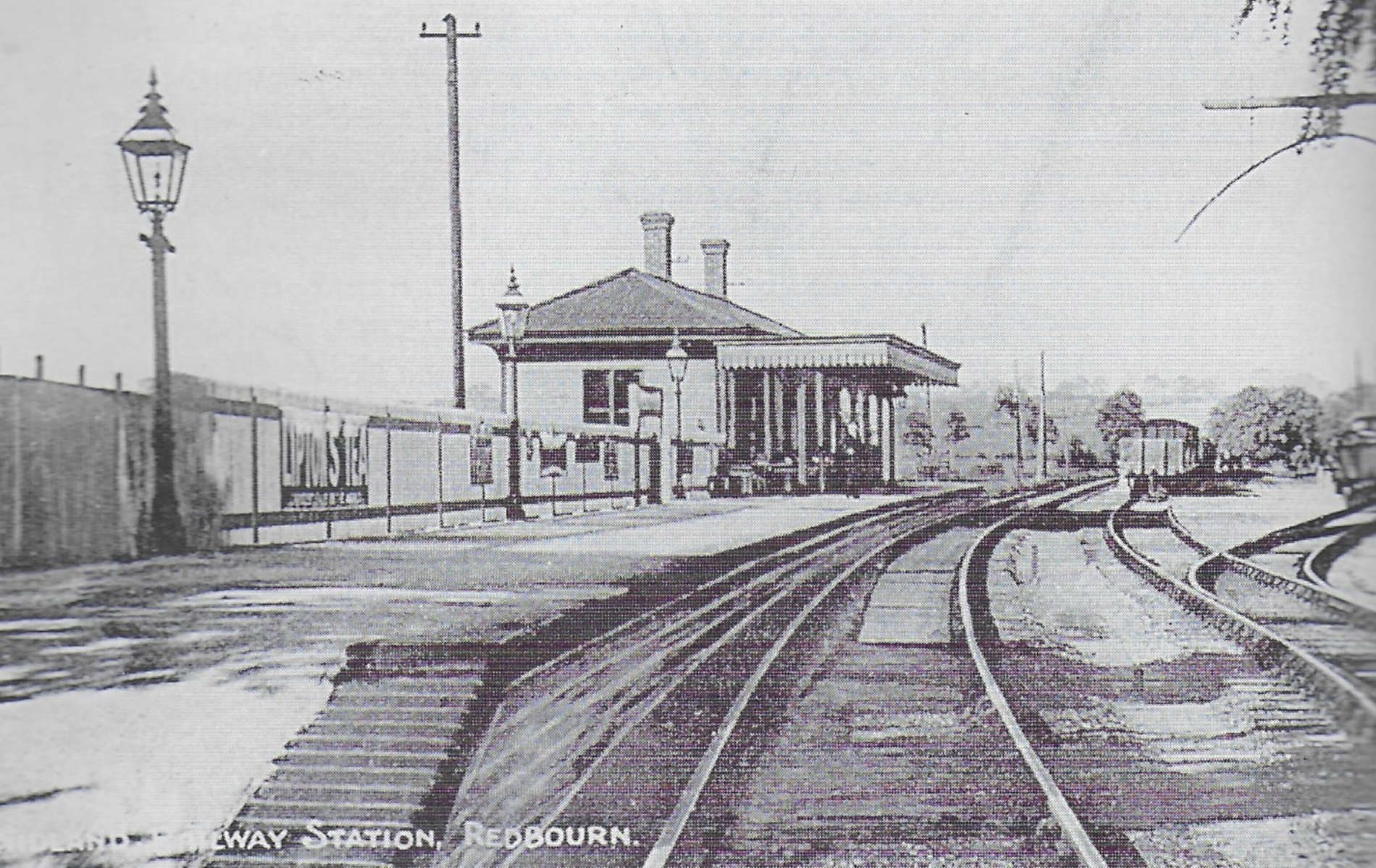
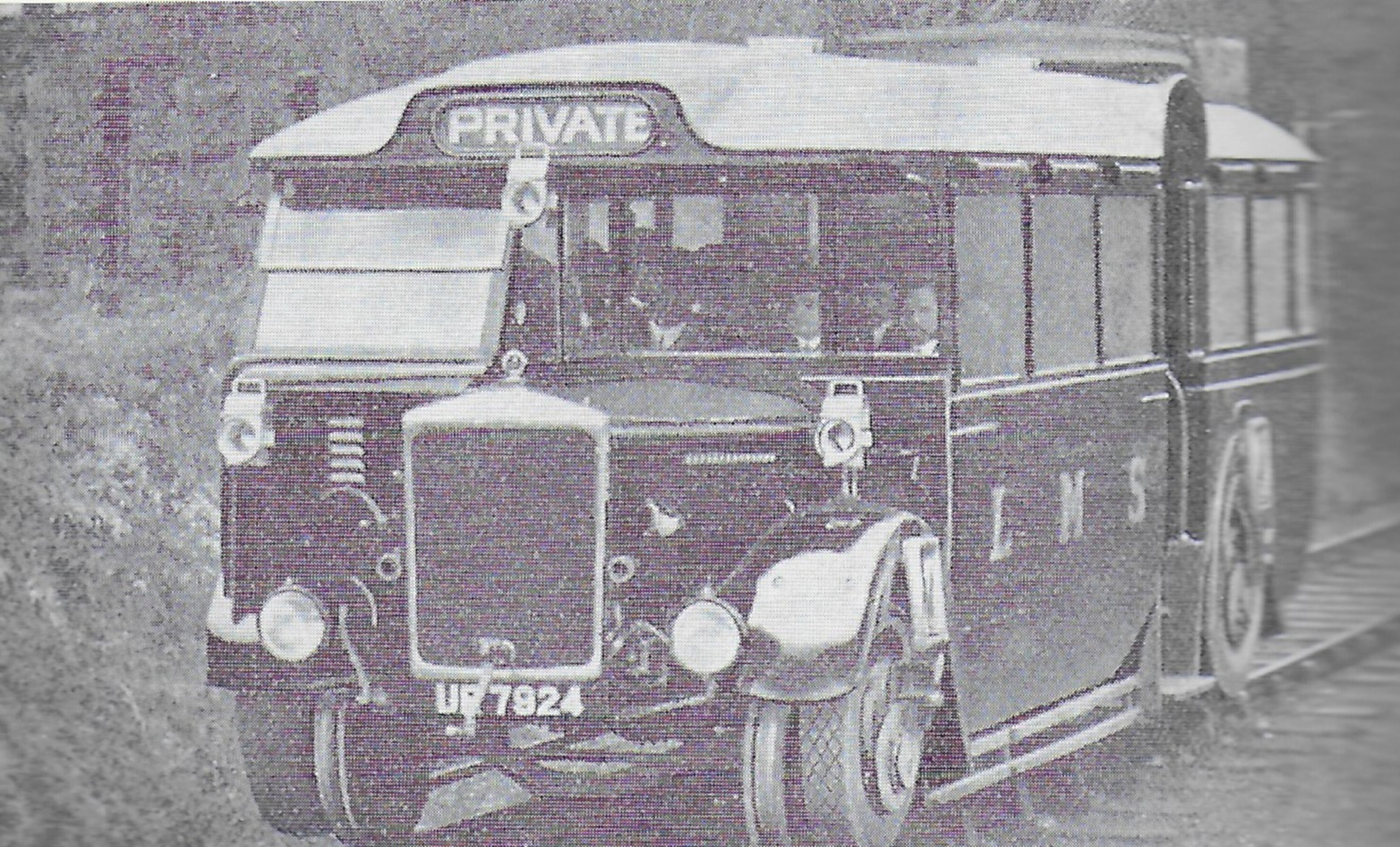
In 1930, the LMS experimented with new transport technology in an attempt to reduce costs and to rationalise its bus and rail operation through Hemel Hempstead. The Nickey line was used to trial a hybrid road-rail vehicle system called the "Ro-Railer", a bus that could travel on both roads and railways. The experiment was short-lived.
Passenger demand was never high and further declined during the inter-war years. By the end of 1946 the only regular rail passengers on the Harpenden service were six schoolchildren. The LMS also moved its main goods operation from Hemel Hempstead to Boxmoor, and it was only the demand for coal supplies to the Duckhall gasworks that kept the Nickey line operational. During the harsh winter of 1946/47 a national coal shortage hit the British economy and passenger trains were "temporarily" suspended. The service was never re-instated and the last passenger service on the Nickey line ran on 16 June 1947.
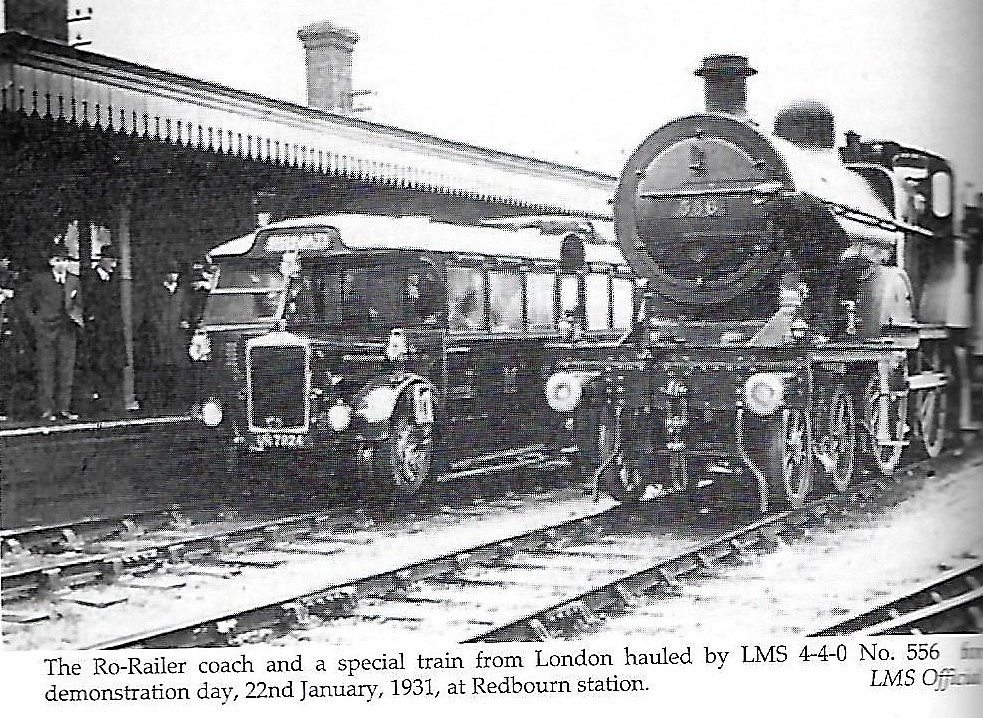
The closure of the line continued in stages; Hemel Hempsted railway station closed in 1963, followed by Godwin's Halt in 1964, cuttings were filled in and commercial buildings and housing estates were built on the former railway land. The line between Cupid Green (north of Godwin's Halt) and Harpenden survived for some more years leased by British Rail in 1968 to the Hemelite concrete company who continued to use the line privately to transport raw materials for manufacturing building blocks via Harpenden to their works at Claydale. British Rail decided then that the branch line should close. The junction with the Midland Main Line at Harpenden Junction was severed on 1 July 1979. The last journey on the line was made by a Hemelite Drewry locomotive which was taken off the tracks at Redbourn and transported by lorry to work on the /Yorkshire Dales Railway. Track lifting was undertaken in 1982 with the following year the track bed was converted into a public footpath.
The course of most of the railway has been redeveloped as a cycle and walking path by St Albans District Council and Dacorum Borough Council. It was opened in 1985 as the "Nickey Line". It is part of Route 57 of the National Cycle Network and is approximately eight miles (14 km). From the outskirts of Hemel, the line crosses largely open country, roughly parallel with the main Redbourn Road. Most bridges are still intact and have been maintained as part of the cycle route. The modern Redbourn By-pass, built in the 1980s, cuts across the route several times and there are no separate bridges. The wrought iron bridge carrying the line across the A5 (A5183) at Redbourn remains intact. This bridge is of a type identical to those originally crossing the Bulbourne and the canal at Boxmoor. There was once a railway station at Redbourn just beyond this point but very little evidence of this remains – the site is marked with an information board today. The route then crosses more open countryside, including fields belonging to the Rothamstead Experimental Station, to Harpenden, where it crosses over the main London road on a brick arch bridge, to connect with the Midland Main Line.
Prior to Hemel Hempstead being chosen as the site for a new town, Redbourn was also considered. Had this occurred then the Nicky line would have been significantly upgraded to provide a link between the West Coast Main Line at Hemel Hempstead and a new railway station at Redbourn.
